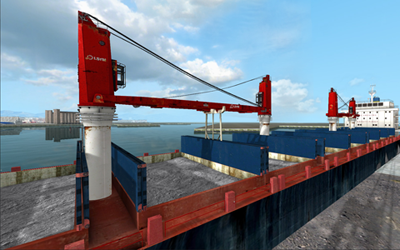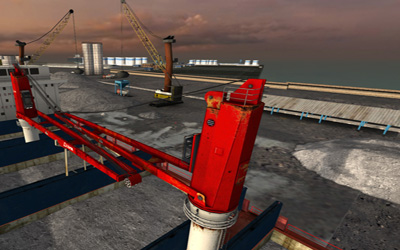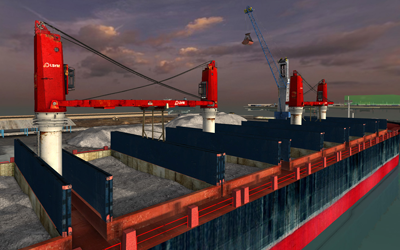- Home
- Mining and construction simulators
- Training Systems
- Industrial simulators
- Gallery
- Port simulators
- Hardware Components
- Hardware
- Simulator Models
- Why Simulators?
- Technical information
- Software
- Our Solutions
- Instructor Information
- Collaborative Mode
- Services
- Ship-to-Shore Crane Simulator
- Bulldozer Simulator
- Mobile Harbour Crane Simulator
- Mining Truck Simulator
- Wheel Loader Simulator
- Underground LHD Loader Simulator
- Forklift Simulator
- High Capacity Forklift Simulator
- 360 Excavator Simulator
- Mobile Crane Simulator
- Rail Mounted Gantry Crane Simulator
- Tower Crane Simulator
- Rubber-Tyred Gantry Crane Simulator
- Telehandler Simulator
- Grader Simulator
- Reach-Stacker Simulator
- Backhoe Simulator
- Ro-Ro Simulator
- Straddle Carrier Simulator
- WheelDozer Simulator
- Electric Shovel Simulator
- Empty Container Handler Simulator
- Drilling Jumbo Simulator
- Bridge Crane Simulator
- Farming Tractor Simulator
- Harvester Simulator
- Ship Pedestal Crane
- New Simulator
- About us
- Our Learning Methodology
- Contact
The Pedestal Crane Simulator for ships fulfils a training need to handle generic and bulk cargo on the ship and thus reduce time in port. The crane also implements various bulk grab equipment.
Due to their versatility, these cranes are often widely used on ships. Our 3D models of pedestal ship cranes are based on MacGregor's standard GLH range of electro-hydraulic cranes, covering lifting capacities from 100 to 1,000 tonnes, with outreaches of up to 36m. In the simulator, the technical specifications of the cranes can also be modified to suit the capacity and performance of any crane model from any crane manufacturer.
Simulator features
Main objectives of the simulator:
- Reduce training costs by not having to use the actual crane.
- Improve the operator's learning curve.
- Risk prevention and improved safety for both operators and cranes, as well as the rest of the environment.
- Possibility to practise situations that cannot be practised on the real crane, such as adverse weather conditions, breakdowns, etc.
- Increased security.
- To be at the forefront of the latest technologies in port training.
- Construction of an immersive environment based on "Virtual Reality" techniques analogous to the real ship crane environment.



Main functions
- Theory module.
- Actual start and stop procedure.
- The driving and operation of the machine is carried out in a carefully designed mine in order to be able to perform all the necessary exercises.
- Accurate simulation of the machine transmission.
- Load-dependent machine response.
- Dynamic avatars.
- On-screen information for both the user and the instructor.
- Information window with status and position of the machine and operation commands.
- Softpanel design and implementation allowing full control of the machine using the PC mouse.
Instructional design
Our simulator consists of a complete instructional design divided into blocks, within each block there are a series of exercises that progressively increase in difficulty as the student overcomes them.
The operator's errors and notes are recorded and reported, we have a report where you mark collisions, graphs and evaluate your exercise.
The results of the exercise are automatically saved, so students can progress as they wish, always knowing what they have done without supervision.

